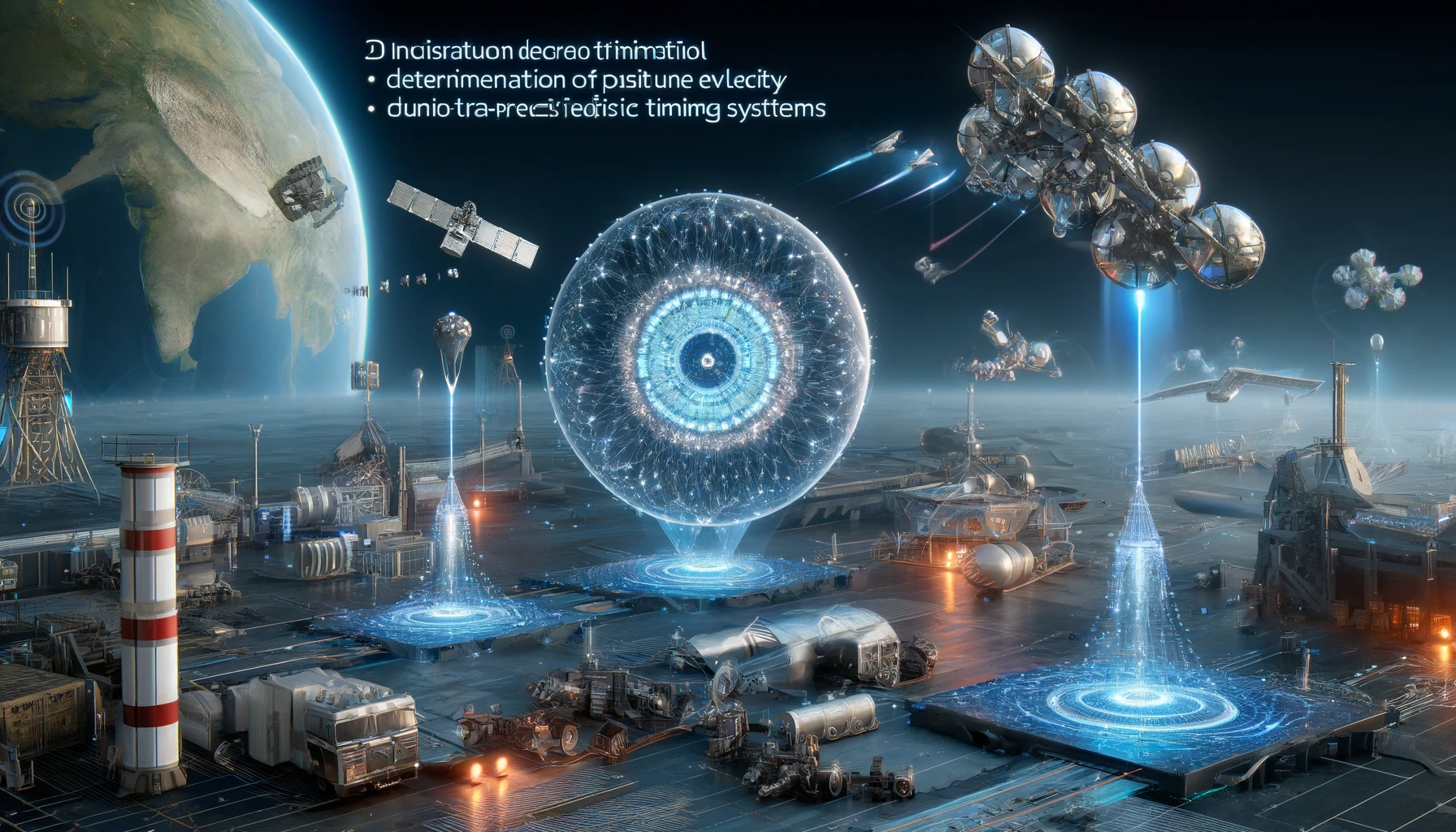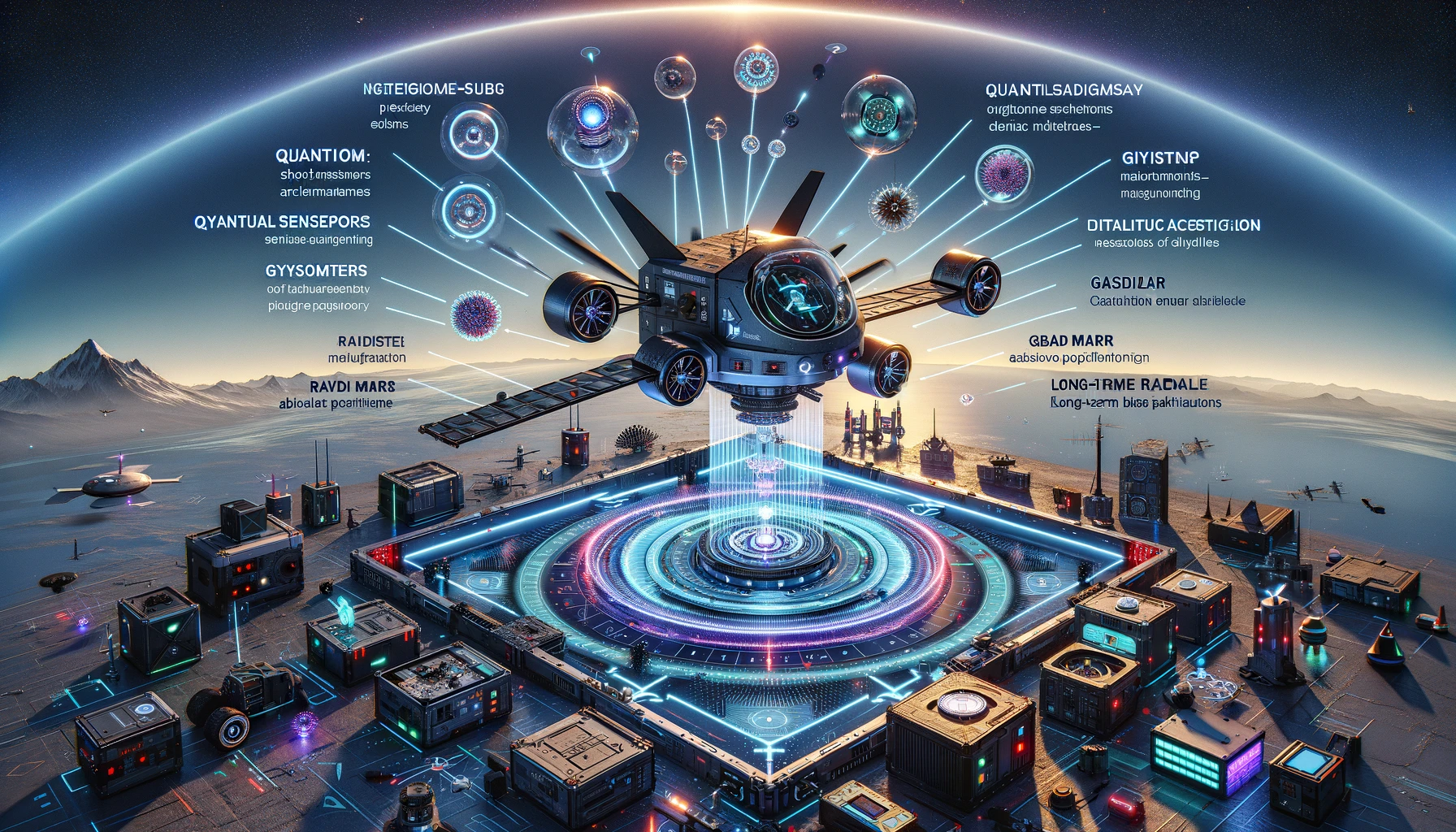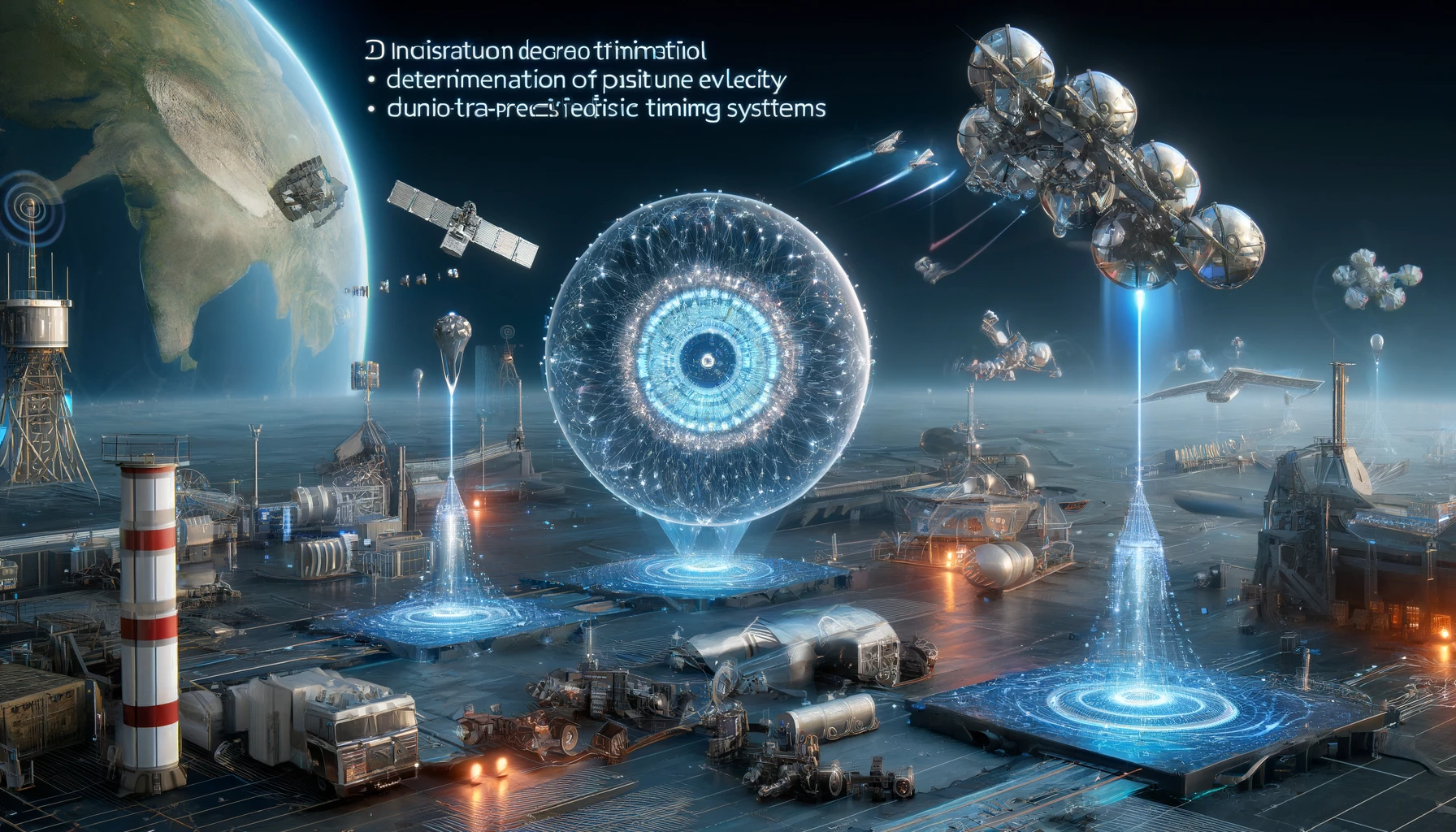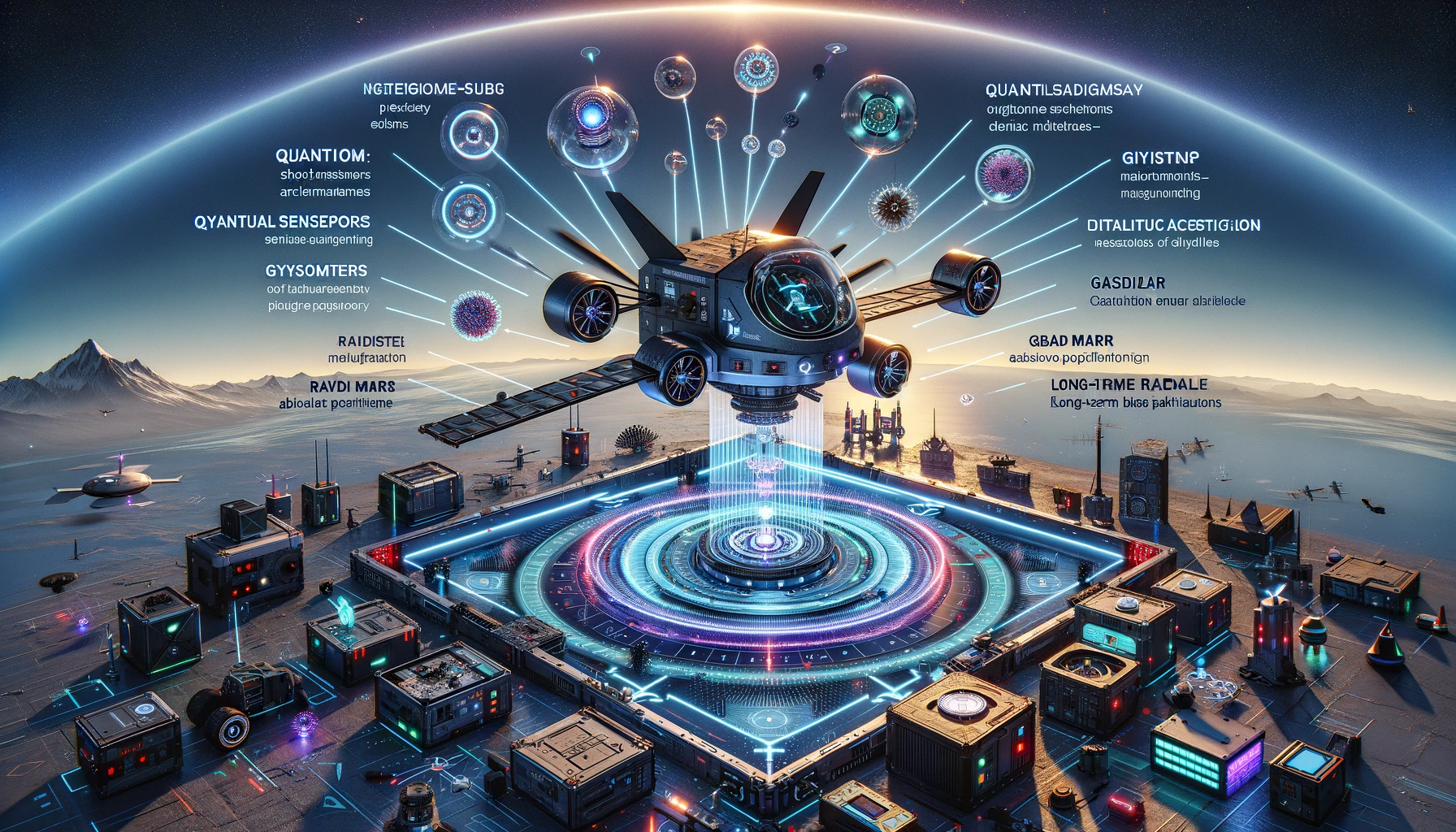- Published on
- Authors

- Name
- Elon Tusk 😄
🌌 The Need for Precise Navigation in Orbital Package Delivery
In the complex and dynamic environment of orbital package delivery, precise navigation and control are essential. Vehicles must be able to accurately determine their position, velocity, and orientation, and make precise adjustments to their trajectory to ensure safe and efficient delivery.
However, traditional navigation systems based on classical sensors and electronics have limitations in terms of sensitivity, stability, and accuracy. This is where quantum sensing and navigation technologies come into play, offering unprecedented levels of precision and enabling new capabilities in space logistics.
🎯 Quantum Accelerometers and Gyroscopes
At the heart of quantum navigation are quantum accelerometers and gyroscopes based on atom interferometry. These devices exploit the wave-particle duality of atoms to make incredibly precise measurements of acceleration and rotation.
Atom Interferometry
In an atom interferometer, a beam of atoms is split into two paths using a laser pulse. The atoms in each path are then subjected to different accelerations or rotations, causing a phase shift between the two paths. When the paths are recombined, the resulting interference pattern reveals the magnitude of the acceleration or rotation with incredible precision.
Quantum accelerometers and gyroscopes based on atom interferometry offer several key advantages over classical devices:
Sensitivity: Atom interferometers can detect accelerations and rotations orders of magnitude smaller than those measurable by classical sensors. This enables the detection of minute changes in velocity and orientation, critical for precise navigation and control.
Stability: Unlike classical sensors, which can drift over time due to factors such as temperature fluctuations and material degradation, atom interferometers are inherently stable. The atoms themselves serve as the measurement reference, providing a stable and reproducible standard.
Accuracy: By leveraging the fundamental properties of atoms, atom interferometers can provide absolute measurements of acceleration and rotation, eliminating the need for calibration and ensuring long-term accuracy.
In the context of orbital package delivery, quantum accelerometers and gyroscopes can be used to:
- Enable precise navigation and control during orbital maneuvers and descent, ensuring accurate delivery to the target location
- Detect and compensate for external disturbances, such as atmospheric drag or gravitational anomalies
- Provide real-time feedback for autonomous navigation and control systems, enabling adaptive and responsive flight

🌍 Quantum Gravimeters
Another key quantum sensing technology for orbital package delivery is the quantum gravimeter. Quantum gravimeters use atom interferometry to measure minute variations in the Earth's gravitational field with unprecedented sensitivity.
By mapping the gravitational field along the delivery route, quantum gravimeters can provide critical information for navigation and landing:
Terrain Mapping: Quantum gravimeters can detect subtle variations in the Earth's gravitational field caused by changes in terrain, such as mountains, valleys, and underground features. This enables the creation of highly detailed terrain maps, which can be used to plan optimal delivery routes and identify suitable landing sites.
Anomaly Detection: Quantum gravimeters can also detect gravitational anomalies, such as those caused by underground cavities or dense mineral deposits. This information can be used to avoid potential hazards and ensure safe landing.
Precision Landing: By providing real-time measurements of the local gravitational field, quantum gravimeters can enable precision landing, even in challenging terrain or low-visibility conditions.

⏰ Quantum Clocks
Precise timing is essential for navigation and coordination in orbital package delivery. Vehicles need to synchronize their operations with ground stations and other assets, and maintain accurate positioning relative to their target.
Quantum clocks, such as those based on trapped ions or optical lattices, offer an unprecedented level of timing precision, far surpassing that of classical atomic clocks. These clocks leverage the stable and well-defined energy transitions in atoms or ions to provide an ultra-precise frequency reference.
In the context of orbital package delivery, quantum clocks can be used to:
- Synchronize operations between vehicles, ground stations, and other assets, ensuring coordinated and efficient delivery
- Provide ultra-precise timing signals for navigation, enabling accurate determination of position and velocity
- Enable relativistic corrections for GPS and other navigation systems, improving overall positioning accuracy
By integrating quantum clocks into the navigation system, orbital package delivery vehicles can achieve an unprecedented level of timing precision, enabling more accurate and efficient operations.

🚀 Integrated Quantum Navigation Systems
To fully harness the potential of quantum sensing and navigation technologies, orbital package delivery vehicles will need to integrate these technologies into a cohesive navigation system.
An integrated quantum navigation system would combine quantum accelerometers, gyroscopes, gravimeters, and clocks with classical sensors and computing systems. This hybrid approach allows for the leveraging of the unique strengths of each technology while compensating for their individual limitations.
For example, quantum accelerometers and gyroscopes can provide highly precise short-term measurements of acceleration and rotation, while classical GPS can provide long-term absolute positioning. Quantum gravimeters can provide detailed terrain maps and detect anomalies, while classical radar and lidar can provide real-time obstacle detection and avoidance.
By fusing the data from these diverse sensors using advanced algorithms and machine learning techniques, an integrated quantum navigation system can provide a highly accurate, robust, and reliable navigation solution for orbital package delivery vehicles.

🔮 The Future of Quantum Sensing and Navigation
As quantum sensing and navigation technologies continue to advance, their impact on orbital package delivery and the broader space industry will only grow. In the coming years, we can expect to see even more sensitive and compact quantum sensors, as well as more sophisticated integration with classical systems.
Some potential future developments include:
- Chip-scale quantum sensors that can be easily integrated into small satellites and delivery vehicles
- Quantum-enhanced GPS and other global navigation satellite systems, providing centimeter-level positioning accuracy
- Quantum-enabled autonomous navigation systems that can operate in GPS-denied environments, such as deep space or on other planets
By embracing the potential of quantum sensing and navigation, the orbital package delivery industry can unlock new levels of precision, efficiency, and capability, paving the way for a new era of space logistics.
🌟 Conclusion
Quantum sensing and navigation technologies are set to revolutionize the orbital package delivery industry, enabling unprecedented levels of precision and accuracy in navigation and control. By leveraging the power of atom interferometry, quantum gravimetry, and quantum clocks, delivery vehicles can achieve centimeter-level positioning, detailed terrain mapping, and ultra-precise timing synchronization.
As the space logistics industry continues to grow and evolve, the integration of quantum sensing and navigation technologies will become increasingly critical to maintaining a competitive edge. Those companies that invest in these cutting-edge technologies will be well-positioned to lead the charge into a new era of space logistics, one defined by unparalleled precision, efficiency, and reliability.
